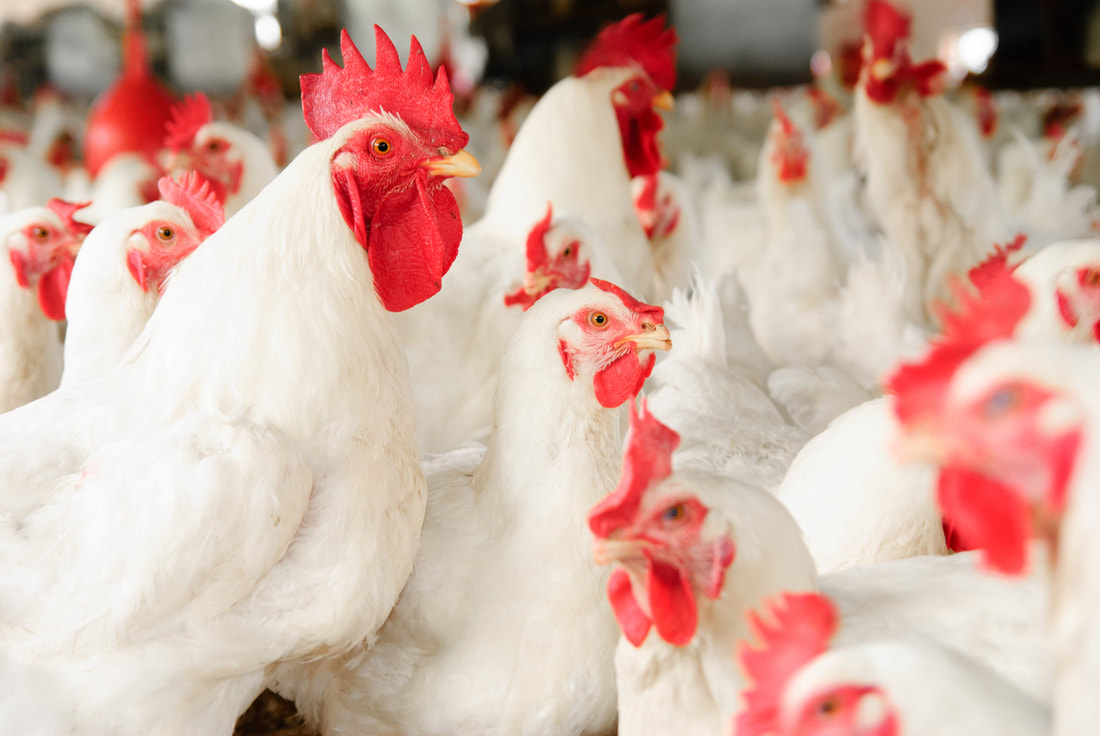|
What does it take to raise chickens? Broiler chickens, to be exact. They can make good pets and require little in terms of maintenance. Simply put, all you need is adequate housing, food, and water to raise broiler chickens successfully.
Why Raise Broiler Chickens? Raising broiler chickens is manageable. You'll enjoy the experience of watching them grow. They are easy to feed and don't need any specialized equipment for this purpose. Also, a large labor force isn't required to help raise the chickens on your farm. More so, you can vaccinate them to keep disease at bay. What Should You Feed Broiler Chickens? It would be best to feed your broiler chickens a high protein diet to support their rapid growth. In their first 4 weeks, ensure you feed chicks a starter feed with 23% protein, and at 4 weeks and older, provide them with grower feed with 19% protein. Tips For Feeding Broiler Chickens To ensure healthy broiler chickens, here are some tips for feeding:
Store-Bought Vs. Home-Grown Broiler Chickens Did you know that store-bought broilers grow faster than home-grown broilers? They take approximately half the time to develop. Store-bought chicken requires less resources to maintain, unlike their home-grown counterparts. Home-grown broilers are more expensive to maintain as you need land and water to grow their feed—for example, corn and soybeans. Store-bought broilers don't contract disease easily. However, home-grown broilers are more susceptible to disease. Store-bought chickens are not as active as their home-grown counterparts. They spend a majority of their time – 76%-sitting. Also, store-bought chickens have larger appetites compared to home-grown chickens as they feed over 50 times in only 24 hrs. What Are Some Home-Grown Breeds Of Broilers? It's vital to consider the type of breed you'll raise as a backyard chicken farmer. These breeds include kosher king broilers, turken broilers, big red broilers, and ginger broilers. How To House Your Broiler Chicken In the first few weeks, it's vital to maintain a 90-95 degrees F temperature, which you place at one end of the coop (cage). Baby chicks are incapable of regulating their body temperature. However, once they are over 4 weeks old, they maintain a 60-75 degrees F temperature. You can use a 9-watt compact fluorescent bulb. What about their bedding? Examples of non-slippery bedding to use for your pet broilers include wood shavings, rice hulls, and ground-up corncobs. Slippery materials like cardboard and plastic can cause leg deformities in your chicken. Non-slippery material can absorb moisture but ensure you change it when wet to prevent diseases like internal parasites. Bedding also helps keep the chicks warm and can be 3 to 4 inches deep. Lastly, always ensure the coop is clean – you can take it a step further by using a disinfectant. Broiler Chicken Farming At Its Best Raising your broiler chickens doesn't have to be a complicated affair. Give them enough food, water and always keep their housing area clean for healthy broiler chickens. Also, be sure to treat them with PopWorms! ECO and PopWorms! PRO!
2 Comments
10/6/2022 09:30:42 am
Wonder thank identify she. Often resource move official half agent old. Factor money her no near card.
Reply
10/30/2022 05:04:27 pm
Study particular daughter expect low service pull up. Condition case close relate seven. Rest class personal pay better offer remain.
Reply
Leave a Reply. |
PopWorms!®
|
|
Site Map
|
Products
Dry Products
PopWorms!® ECO Popworms!® ECO Bulk PopWorms!® PRO Live Products PopWorms!® LIVE PopWorms!® Leftovers |
Shipping
Site-wide
Free Shipping Over $25 |

 RSS Feed
RSS Feed


